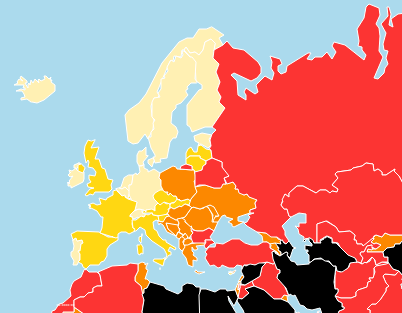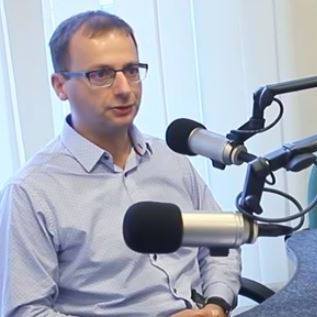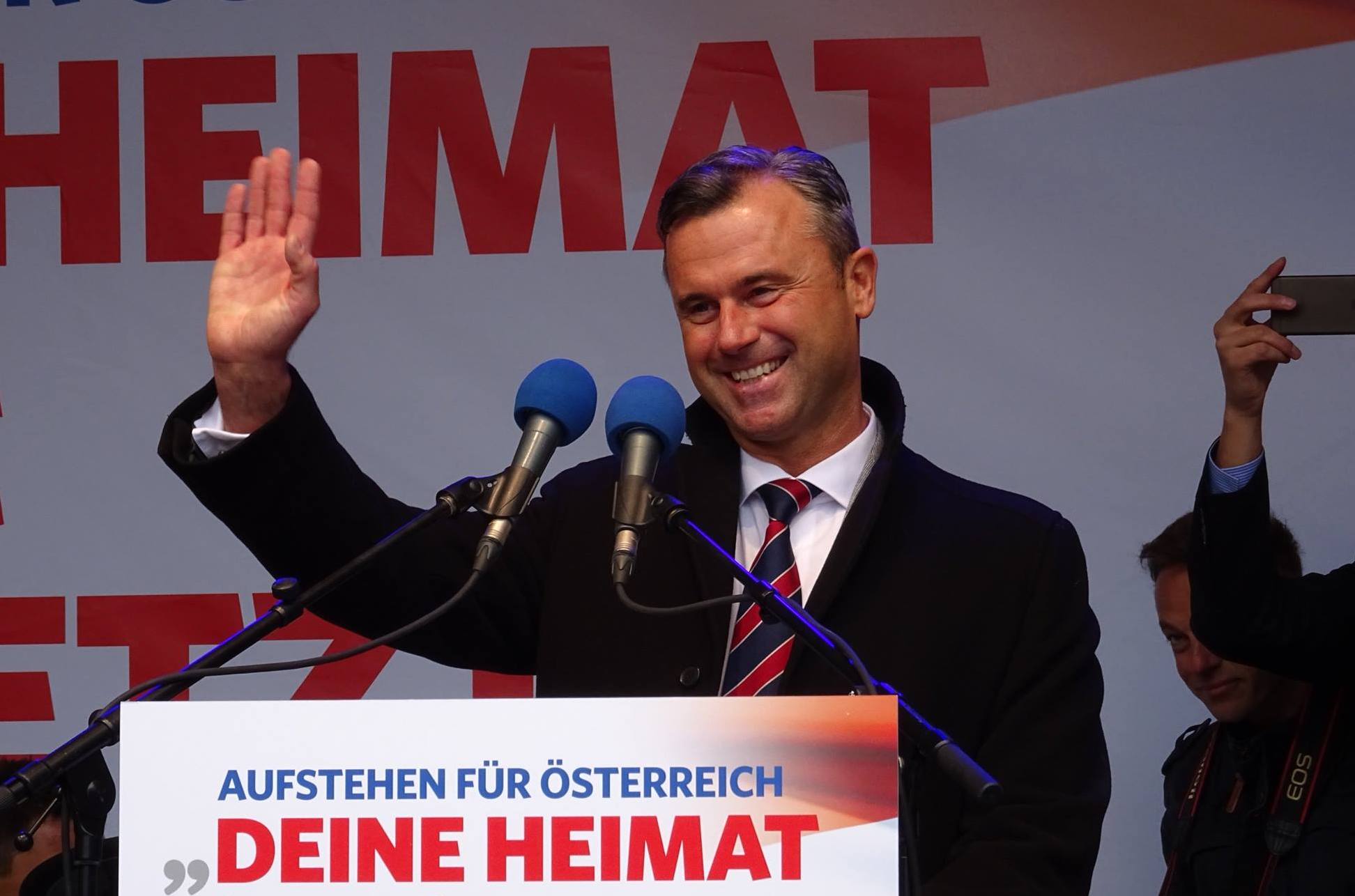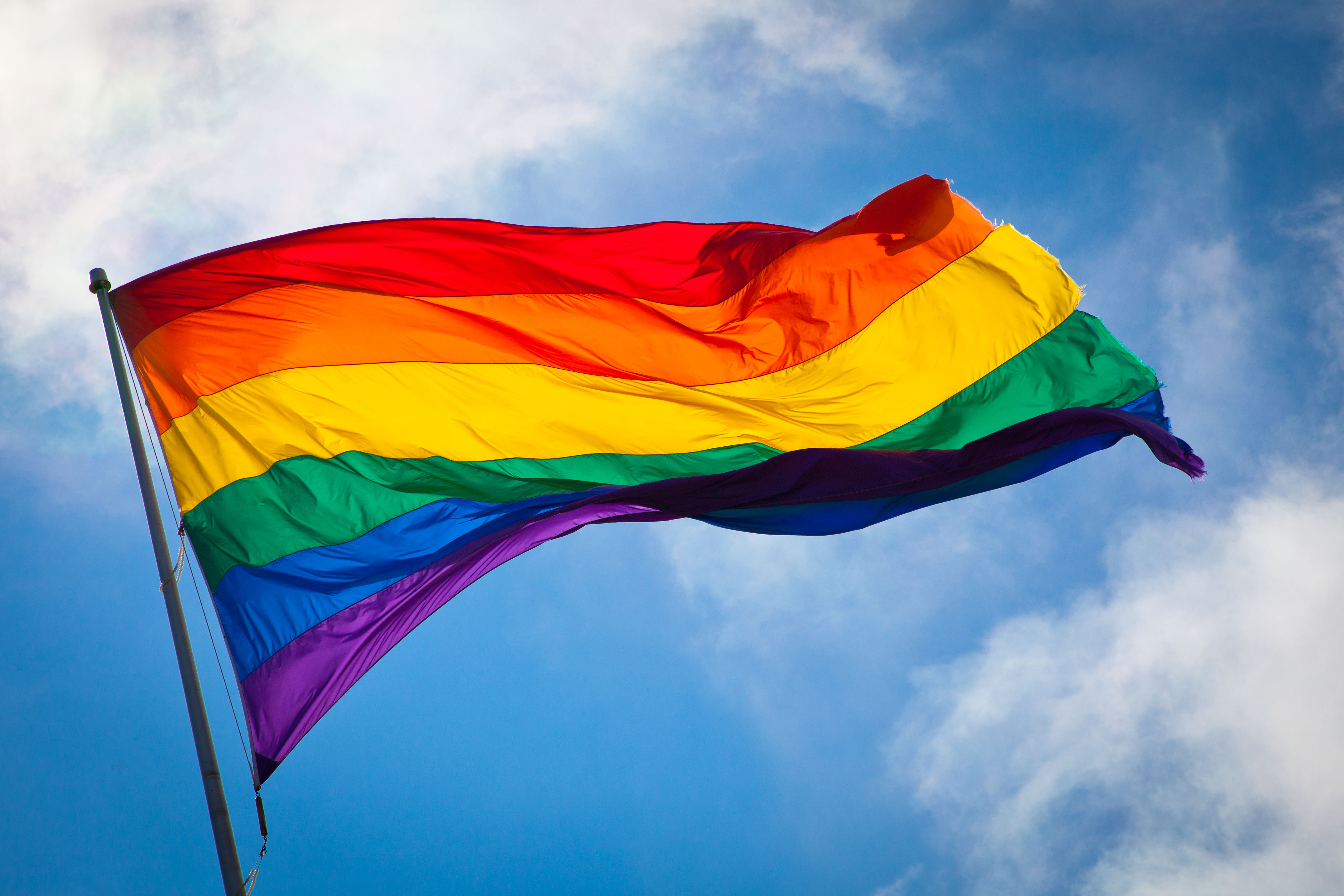By Olivier Bault.
Originally published in English on Kurier.plus.
Poland/Hungary/France – The 2019 edition of the World Press Freedom Index puts Poland and Hungary respectively in 59th and 87th position out of 180 countries.

Both countries have fallen in the ranking, compiled by Reporters Without Borders (RSF). In 2017, Poland and Hungary ranked respectively 54th and 71st. By contrast, RSF’s home country, France, has risen from 39th to 32nd in the same period. However, RSF is known in France to have developed a strong left-wing bias over the years, and it is worth looking at the reality of media pluralism in Poland and Hungary, and how the situation has evolved in both countries since they have had right-wing conservative governments. In particular, it is quite surprising that France should have gone up in the press freedom ranking at a time when media ownership concentration has increased and new laws have been – or are about to be – enacted which place clear restrictions on the freedom of speech. Most French mainstream media would nevertheless say that the PiS and Fidesz governments have made every effort to control most media outlets in their respective countries and to silence opposition. Here too, it should be stressed that all mainstream French media take their information about Poland and Hungary from correspondents with clearly leftist-liberal views, who generally embrace the views of the local opposition on any important matter. Why hire only such correspondents? Probably because their left-wing views match those of a large majority of French journalists, who are known to lean towards the left a lot more than the French electorate as a whole. It may therefore very well be that the image of the “ultra-nationalistic” or “ultra-conservative” governments of Poland and Hungary, to use epithets which are common in the French media when referring to both countries, reflect rather the left-wing bias and lack of pluralism of the media in France, and not an actual lack of freedom and pluralism (which are closely linked, as you cannot have real press freedom and freedom of expression in the media without media pluralism) in the two Central European countries.
The Hungarian media landscape split in two halves
First, what is the real situation of the media nowadays in Hungary?
According to Mérték, an NGO supported by George Soros’ Open Society Foundations, media outlets favourable to Fidesz garner 77.8% of revenues from the media market, including 38.1% for the public service, 24% for the KESMA media group, and 15.7% for other pro-government media. KESMA stands for Közép-Európai Sajtó és Média Alapítvány, which translates as Central European Media and Press Foundation. It was created in the summer of 2018 as the Hungarian equivalent of the German Bertelsmann media conglomerate, which owns the RTL Group, but with a more conservative and Christian editorial line. It controls more than 500 Hungarian news outlets, including television channels, radio stations, newspapers and websites. Its owners are said to be close to Fidesz. The RTL Group, which stands in opposition to Viktor Orbán’s governments with a clear liberal, left-wing stance, is Hungary’s leading television group, with an average audience share of 27.5% in 2019.
As a matter of fact, according to another report from the Nézőpont Institute, the picture is very different when we consider the potential reach of media outlets. Overall, media outlets which are hostile to the government have a maximum audience of 4.44 million people, while those with a pro-government line have a maximum audience of 3.1 million, including 2.2 million for the KESMA group. Broken down by type of media, the audience shares are as follows:
|
|
Anti-government |
Pro-government |
|
TV |
54% |
46% |
|
Radio |
53% |
47% |
|
Printed press |
28% |
72% |
|
Internet |
71% |
29% |
|
Total for all media |
59% |
41% |
It also has to be stressed that in Hungary, the pro-government or anti-government stance of media outlets is usually linked to predominantly conservative, Christian views on the one hand and progressive, liberal views on the other. Thus, it is still possible for many different opinions to be expressed in the Hungarian media, which cannot be said of the French media: regardless of whether a media outlet in France is regarded as being in favour of or in opposition to the government, it will in most cases have a liberal, progressive editorial line, and that makes it much more difficult for alternative opinions to be heard in the home country of Reporters without Borders.
It should also be noted that the dominance of pro-Fidesz news outlets in the printed press is not just the result of planned policies enforced by the government or by Fidesz, but also of several recent events. For example, before the 2018 elections, the prestigious Magyar Nemzet newspaper belonged to Hungarian businessman Lajos Simicska. Simicska was an old friend of prime minister Viktor Orbán. However, starting from 2015, for some obscure reason he became the PM’s fiercest foe. Simicska then started to wage a media war on Orbán and to give full support to his opponents, in particular to the nationalist Jobbik party (which has now become a more centrist, pro-EU party). Thus, in the campaign leading to the last parliamentary elections in 2018, even media outlets which had been seen as right-wing and pro-Fidesz radically changed their editorial line after Simicska fired most of their pro-Fidesz journalists. Apart from the Magyar Nemzet newspaper, this was also true of the Hír TV channel (which had been created in 2002 to break the monopoly of the left on the television market), the Lánchíd Rádió radio station and the Heti Válasz weekly magazine. Hence, in the last election campaign a majority of big private media outlets in Hungary were actively engaged in the campaign against the outgoing parliamentary majority. Together with its Christian-democratic KDNP ally, Fidesz nonetheless won a landslide victory in the elections of April 2018, and Lajos Simicska decided to give up the fight and to dispose of his media empire, which came into the hands of new owners who are known to be more pro-Fidesz.
Another factor behind the opposition’s weakness in the printed press was the closure of the left-wing, post-communist Népszabadság daily newspaper in 2016. Népszabadság had remained the country’s number one newspaper in the 1990s after it had been ceded to the German Bertelsmann media group during the transition to democracy in 1989–90, with the accompanying condition that the new owner would keep the old Communist members of the editorial board in their posts for at least five years. Népszabadság was sold to the Swiss Ringier media group in 2014 and was closed by Axel Ringier in 2016 after losing 74% of its readers in ten years. The closure thus had nothing to do with the government clamping down on the opposition press, although that is how it was presented in some Western media.
It should also be recalled that the domination of the post-communist left in Hungarian media used to be such that in 2006, for the first time in a country of post-communist Eastern Europe, an angry crowd assaulted the headquarters of public television, an event which was only shown by the then small Hír TV channel. In 2006 the lack of pluralism in Hungarian media was at its worst, and Fidesz’s current dominance comes nowhere near that of the liberal and post-communist left 15 years ago. In spite of that, Hungary was not criticised for its lack of media pluralism then as it is now.
Polish media predominantly left-wing and hostile to PiS
In Poland, one can hardly say that Kaczyński’s Law and Justice party (PiS) dominates the media landscape. The two big private television platforms, TVN and Polsat, are both hostile to PiS, and Kaczyński’s party can count only on the support of the public TVP channels, having changed the management of public media in early 2016. The TVN group now belongs to the American media company Discovery, Inc. and Polsat has Polish owners. The former is the most overtly opposed to PiS. Before 2016, all main TV channels in Poland, and all news channels, were fiercely hostile to PiS and favourable to the governing liberals of the Civic Platform (PO). The monopoly of the left and liberals in the Polish television landscape even led to large protests in 2012 and 2013, when the Polish National Broadcasting Council, whose members had been changed in 2010 on the basis of an agreement between the PO-PSL governing coalition and the post-communist SLD to exclude PiS sympathisers from public television (PiS was then the largest opposition party), refused to let even one small Catholic television channel broadcast on the digital terrestrial television network that was to replace traditional terrestrial television. That channel, TV Trwam, happened to be critical of the government. That situation did not seem to worry Reporters Without Borders very much at the time.
As for the printed press, most daily newspapers in Poland are either moderately or fiercely critical of the government. In the first half of 2019, the number one daily newspaper was still, by far, Fakt, which belongs to the Swiss–German Ringier Axel Springer media group with a government-critical editorial line (as is the case for all Polish media belonging to Ringier Axel Springer, including the number one website, Onet.pl, and one of the biggest weekly magazines, Newsweek Polska). The number three daily newspaper, Gazeta Wyborcza, has an aggressively progressive, pro-EU and anti-PiS editorial line. The number four daily newspaper, Rzeczpospolita, has a liberal-conservative editorial line in theory, but it has been owned since 2011 by a businessman who is close to the Civic Platform, and it is also very critical of the current government. The only national daily newspaper which is openly in favour of PiS is Gazeta Polska Codziennie, which comes only seventh. While in Hungary Fidesz has managed to take control of most of the regional press, in Poland 19 out of 24 regional newspapers belong to a German media group, Verlagsgruppe Passau. The situation is different in the case of national weekly magazines, where the share of the readership between left-wing and right-wing titles is more or less balanced.
What about France?
In contrast to Poland and Hungary, where the mainstream media are characterised by two conflicting narratives, in France the nine oligarchs who control 90% of private media support President Emmanuel Macron and share his progressive liberal, pro-immigration, globalist, euro-federalist ideology. In the run-up to the second round of the 2017 presidential elections, all of the largest public and private media in France campaigned for Emmanuel Macron against Marine Le Pen, a situation which is more reminiscent of Putin’s Russia than of a member of the EU.
It is also known as a fact that in France left-wing views are much more dominant among journalists than among the general public, as can be best seen by the fact that in the mainstream media alternative right-wing, conservative and/or Catholic media are often called the “fachosphere” (with “facho” referring to fascist), and the conservative governments of Poland and Hungary are regularly labelled “ultra-conservative” or even “ultra-nationalist”. In the 2012 presidential election an opinion poll conducted in two colleges where French journalists are trained, the Centre de formation des journalistes (CFJ) and the École supérieure de journalisme (ESJ), showed that almost all students voted for the left or the far-left. Such a situation is very different to that found in Poland and Hungary, where there is a great diversity of opinions among journalists working for mainstream media, ranging from the Marxist or neo-Marxist left all the way through the centre of the political spectrum to the nationalist or Christian, pro-life right. This can be best seen from the fact that in both Central European countries there are often two completely different narratives describing conflictual issues such as immigration, sovereignty, the rule of law and the role the EU should play in that matter, LGBT rights, abortion, and so on. In France, the views of the liberal left on such questions are rarely questioned in the mainstream media, where any dissident view, for example on the issue of abortion (France is the EU country with the highest number of abortions every year), systematically provokes very aggressive reactions from all sides, as France has recently made abortion a “fundamental” and “inalienable right”, i.e. an issue which can no longer be discussed.
A peculiarity of France is that since the so-called Pleven law was enacted in 1972, anti-racist associations, which are often financed with state funds, have been allowed to go to court against anyone who says or writes something they consider to be of a racist nature or encouraging racial discrimination. Since then, several laws have extended this extraordinary capacity to other fields, such as homophobia or all types of supposedly discriminatory or hateful speech. This in turn has led to a situation where French journalists have to enforce strict self-censorship, unless they are prepared for the eventuality of having to face trials which can last years and consume much of their resources and energy.
A so-called anti-fake news law was also passed in 2018, which will enable the French government, in times of electoral campaigns, to request a judge to block within 48 hours any piece of information or any website presenting such information if it considers that the information is untrue. In the light of this new French law, one can only be struck by the brutality and often untruthful and defamatory nature of Lajos Simicska’s campaign against Viktor Orbán ahead of the 2018 elections. During that campaign, Hungary’s freedom of expression appeared, if anything, somewhat excessive.
Furthermore, a new law being discussed in the French Parliament and supported by President Macron’s LREM party will only make things worse in France. The Avia law, which is officially meant to fight “hate speech” on the Internet, will threaten social media with gigantic fines if they do not react within 24 hours to cases of hate speech reported by users. The prospect of such a law is already encouraging social media of the likes of Facebook and Twitter to intensify their preventive censorship, while accusations of collusion between the government and Facebook France, whose chief executive Laurent Solly is a former prefect, a former chief-of-staff in the Ministry of the Economy, and also a former deputy manager of Nicolas Sarkozy’s campaign in 2007,are supported by the social media’s policy of systematically blocking the profiles of so-called Identitarians and all kinds of posts mentioning their unusually heavy sentences after their high-profile, peaceful protest on the Col de l’Échelle in the Alps in April 2018, which was meant to alert the public to the fact that many illegal immigrants go unchecked on that part of the border between Italy and France.
By contrast, in Poland a special commission of the Sejm was established last December to defend freedom of expression against preventive censorship exerted by the American social media giants, and the chairman of the National Media Council, Krzysztof Czabański, is among the signatories of an open letter sent to PM Mateusz Morawiecki to protest against Google’s and Facebook’s political censorship against conservative, right-wing content in their services.
Let us also remember that Hungary’s own media law passed in 2010, which imposed fines on media outlets found guilty of voluntary misinformation, caused outrage in Brussels and among European media, even though it can only be applied in cases where the information presented as factual has been proven incorrect in court after a regular trial. With the French “anti-fake news” law, the 48-hour deadline by which a judge will have to decide whether or not to block any content at the request of the executive power during electoral campaigning can only lead to arbitrary decisions. And as for the Avia law currently being discussed in the French Parliament, it even contains a provision which would make it compulsory for advertisers to publish a list of all websites where their ads appear, so that it would become even easier for the far-left Sleeping Giants movement of self-appointed Internet censors to put pressure on companies to make them withdraw their ads from websites which are considered too right-wing, too conservative, or too “reactionary”. The Sleeping Giants started their censorship activity by targeting the Breitbart News website after the last American presidential election, and they have now become active in France, going as far as attacking (with much success) the website of the only right-wing mass-circulation weekly in France, Valeurs Actuelles. As the French Secretary of State for the Digital Sector Cédric O described it himself in front of MPs, this latest censorship bill is also about taking away “part of the financing from websites which are radical or which we wish to see disappear”.
Luckily, the governments of Poland and Hungary and their current premiers, who are both former opponents of Communist totalitarian regimes, have no such plans against freedom of expression and freedom of the press.




